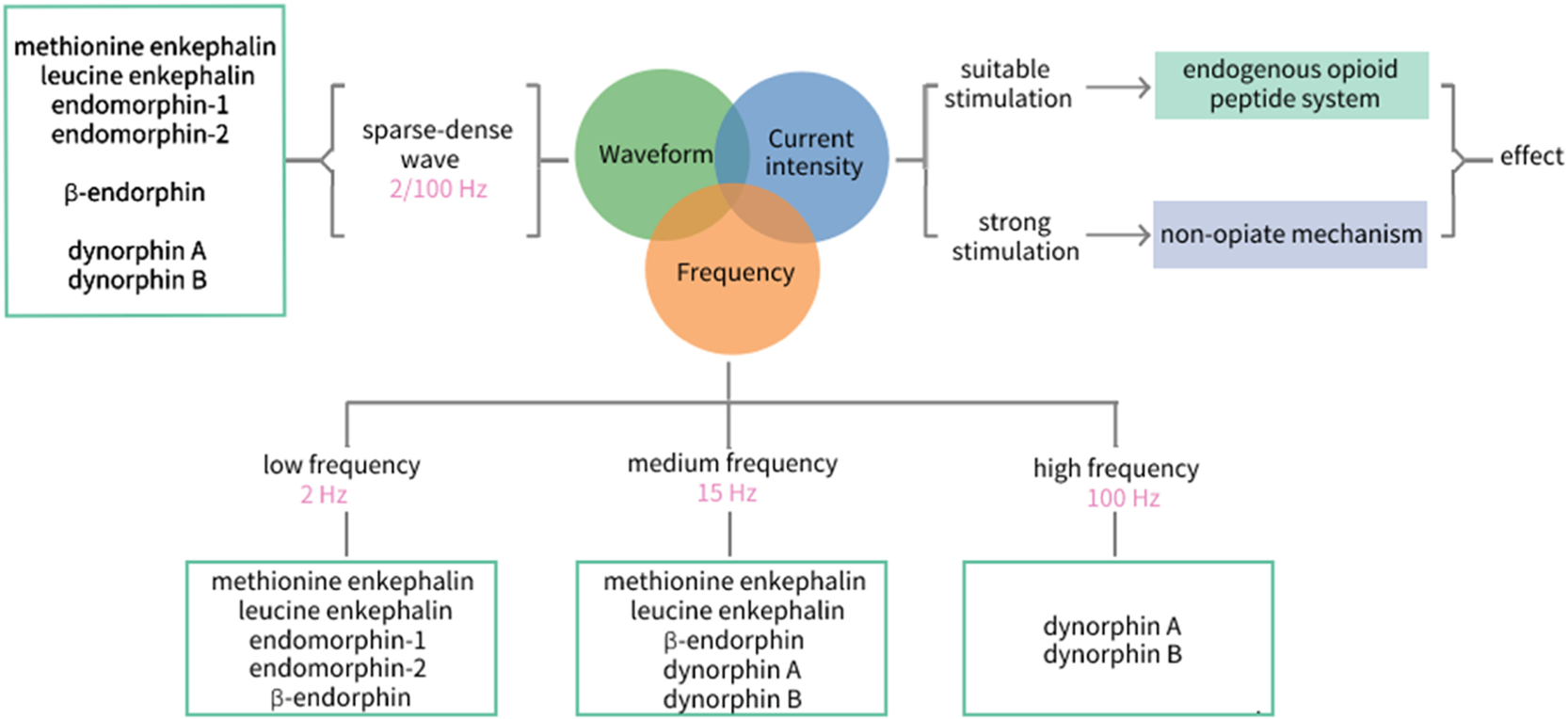Electroacupuncture with different parameters regulate the endogenous opioid peptide system
Published 25 March, 2024
Endogenous opioid peptides are the neurochemical basis of the anesthetic and analgesic effects of acupuncture. The quantity of acupuncture stimulus can be controlled accurately by using electroacupuncture.
In a new study published in the World Journal of Acupuncture - Moxibustion, a team of researchers from China showed that that endogenous opioid peptides system presents a frequency-response specificity.
“The low frequency of electroacupuncture promotes the release of enkephalin, β-endorphin and endomorphin, the high one activates the dynorphin system selectively, and the intermediate frequency works on promoting the release of enkephalin and β-endorphin, as well as dynorphin,” explains Xue-song Tian, senior and corresponding author of the study. Tian is a professor in Experiment Center for Science and Technology at Shanghai University of Traditional Chinese Medicine
“Sparse-dense wave of electroacupuncture may induce the release of enkephalin, β-endorphin, endomorphin and dynorphin, presenting a synergistic effect,” Tian further explains. “However, the waveform of electroacupuncture should be selected flexibly in clinical practice. Sometimes better therapeutic effect can also be obtained with the continuous wave of electroacupuncture.”
Endogenous opioid peptides system has been found to be involved in mediating appropriate intensity of electroacupuncture, while the acupuncture effect generated by an extra strong electroacupuncture stimulation refers to a type of stress response of non-opioid mechanism.
“The combination of electroacupuncture parameters should be optimized in accordance with different diseases, which is valuable for guiding clinical practice and the development of electroacupuncture therapy,” says Tian. “Acupuncture is different from medication in terms of the mode of action, with more complicated and subtle regulatory effects involved”
The authors note that further quantitative studies of different stimulation parameters are needed to further elucidate the underlying mechanisms of acupuncture.

Image:Endogenous opioid peptides system and dose-effect relationship of electroacupuncture (frequency, waveform and intensity). CREDIT: Ping Chen and Xue-song TIAN
Contact author name, affiliation, email address:
Xue-song TIAN, Experiment Center for Science and Technology, Shanghai University of Traditional Chinese Medicine, Shanghai, China, xuesong.tian@shutcm.edu.cn
Funder:
This research was supported by the National Natural Science Foundation of China: No.81574078; 6th Cycle Medical Key Specialty Construction Project of jinshan District; JSZK2019H04: Three Years Action Plan of Shanghai to Further Accelerate the Development of Traditional Chinese Medicine: 2018-2020.
Conflict of interest:
The authors declare that they have no known competing financial interests or personal relationships that could have appeared to influence the work reported in this paper.
See the article:
CHEN P, XU H, ZHANG R, et al. Dose-effect relationship between electroacupuncture with different parameters and the regulation of endogenous opioid peptide system. World Journal of Acupuncture-Moxibustion, 2023[2023-08-31]. https://www.sciencedirect.com/science/article/pii/S1003525723000430. DOI:10.1016/j.wjam.2023.06.003.